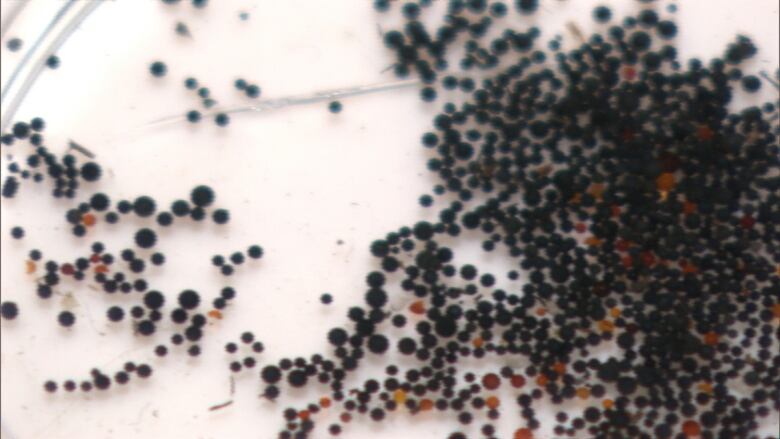Plastic microbeads polluting St. Lawrence River, McGill researchers find
Researchers say plastics from cosmetics and cleaners discovered in fresh water for the 1st time

They're normally found in facewash, shower geland toothpaste. Butplasticmicrobeads are now showing up in lakes and rivers.
A team of researchers from McGill University and the Quebec government have discovered these microbeads often marketed by the cosmetic industry as a way to feel extra clean at the bottom of the St. Lawrence River.
"The more we looked, the more we found. That was definitely really worrisome," saidSuncica Avlijas, a graduate student at McGill University.
Microplasticsare a global contaminant in the worlds oceans, but this is the first time they been detected in fresh water.
Researcherscollected sediment from ten locations along a 320-kilometresection of the river from Lake St. Francis to Quebec City.
Microbeadswere sieved from the sediment, and then sorted and counted under a microscope.
At some locations, the researchers measured over 1,000microbeadsper litre of sediment, a magnitude that rivals the worlds most contaminated ocean sediments.

Ricciardi is worried the small plastic beads will end up in the food chain.Scientists say toxins like PCBs can latch onto microbeadswhich then get eaten by fish.
McGill researchers are dissecting some fish that feed on the riverbed, looking for microplastics inside.
"If they build up in large enough numbers, as they appear to be, they can more easily enter the food chain," Ricciardi said.
Legislation wanted
Illinois recently became the first U.S. state to ban the sale of cosmetics containingmicrobeads.
Quebec's Green Party wants theprovince to follow suit.
"What we hope is that if a couple of states orjurisdisctionsin North America ban the sale ofmicrobeads then the manufacturers will extend that ban to all their products simply to have uniform distribution," said Alex Tyrrell, leader of the Green Party of Quebec.
Cosmetics companies such as L'Oral and Johnson & Johnson are pledging to phase out microbeads from their products within the next three years.
"Our ability to detect things in our environment has just increased exponentially in the last number of years. This kind of science has now come to light and the appropriate steps are going to be taken to make sure they're eliminated,"said DarrenPraznik, president and CEO of theCanadianCosmetic, Toiletry and Fragrance Association.












_(720p).jpg)


 OFFICIAL HD MUSIC VIDEO.jpg)
.jpg)



























































































